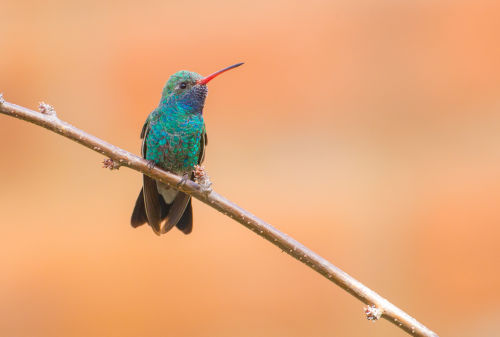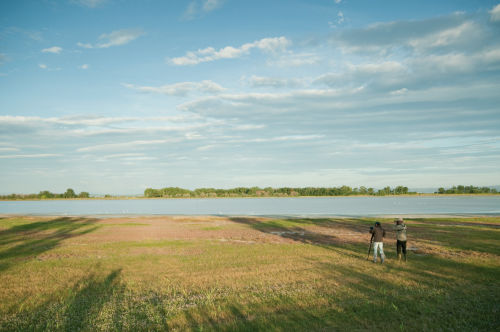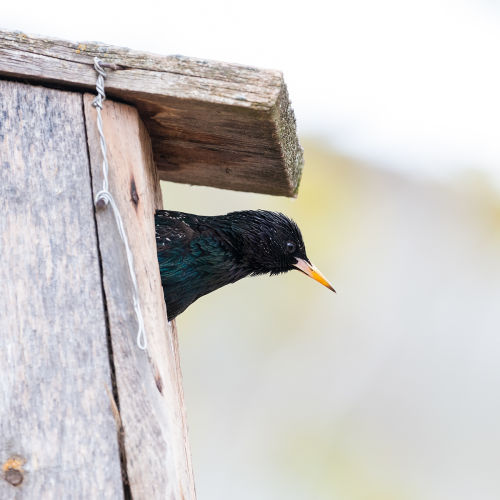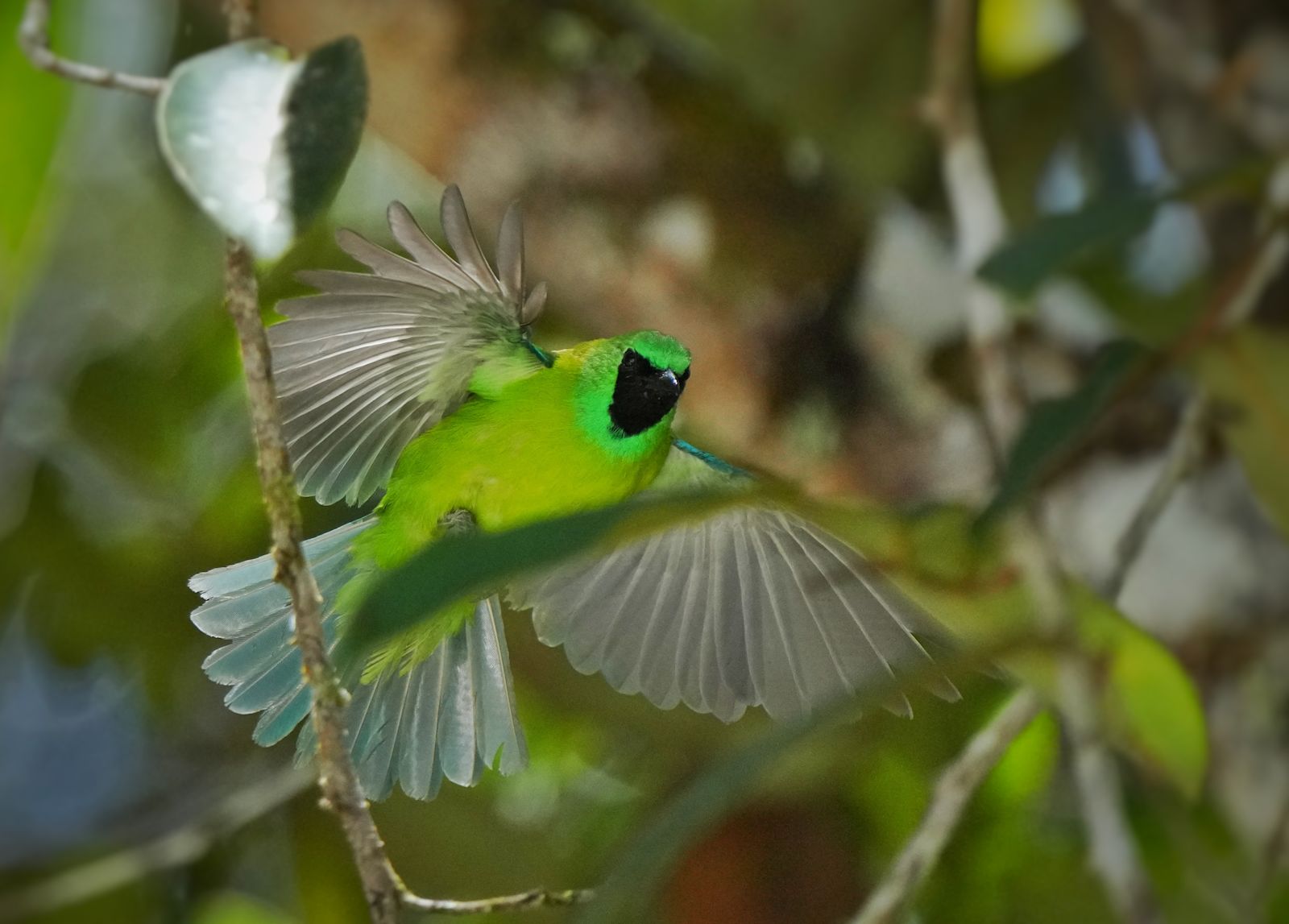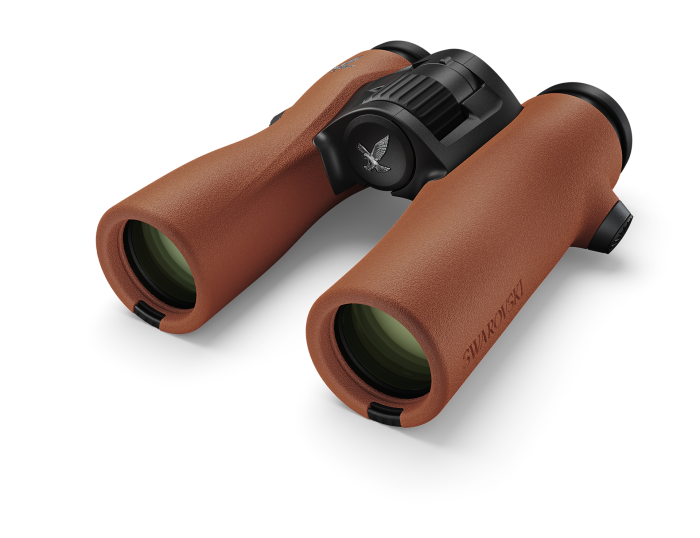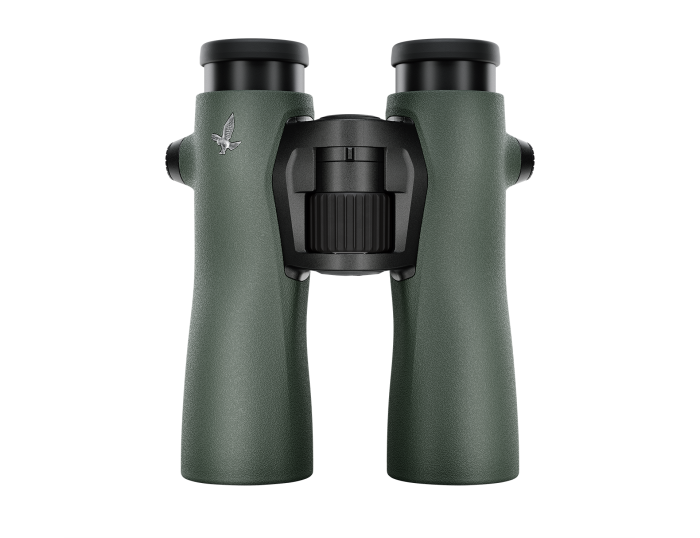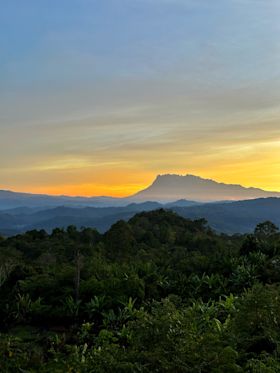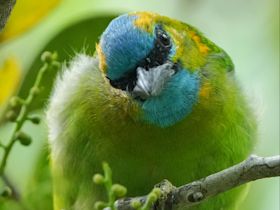CURIOUSITY AND RESEARCH
The journey to Borneo started in 2021 for me - at least in my head. I was talking about India’s wild cats to a room full of people, with a specific focus on tigers, their status, range, distribution and uncertain future across global hotspots. There was a slide of a distribution map which was behind me while talking about Sumatran and Balinese tigers. Someone, very eager obviously, pointed out to a big blotch on the map of South/Southeast Asia that had no records of these big cats. In fact, it had no records of tigers or leopards, even historically. The only large landmass on the entire map more or less. It was the island of Borneo, the third largest island in the world. Covered in rainforests, hilly terrain, large rivers and plenty of prey, yet, these cats never made it here. How come? This tidbit of information got me more curious about this wilderness, the only place in the entire area where the Sunda clouded leopard was the ‘top cat’ with no other big cat to push it to the shadows.

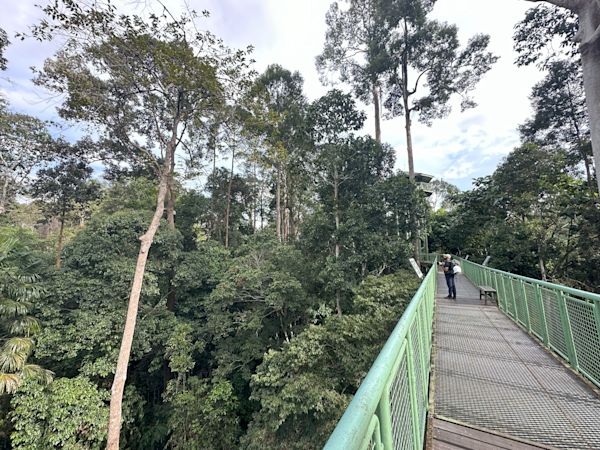
Borneo
#fortheloveofnature
I’ve always been drawn to rainforests, especially since I hail from the Western Ghats, the oldest rainforests of India. Reading about, and seeking birds, butterflies, dragonflies, snakes, frogs and spiders was my place of Zen. Naturally the Congo, the Malay Peninsula, Sumatra and, of course, the Amazon and its cousins in Central America, were the forests I dreamed of. Borneo quickly rose up to the top of the list. The more I read, the more I stared at Google Earth, the more I felt attached to this island. ‘A Naturalist in Borneo’, ‘Birds of Borneo’ and ‘Mammals of Borneo’ were my first purchases, and I was hooked. The strange love affair had begun!
OUR PLAN
When things are meant to be…and it goes your way. There is no better feeling! In 2024 my friend Vedant and I, out of the blue, got invited to visit Sabah, a district in northern Borneo, on a familiarization tour by the Sabah tourism authority and a travel company based in Sandakan. Obviously, there were no second thoughts here.
We were going to explore the trails and boardwalks at Rainforest Discovery Center at Sepilok, the river system of Kinabatangan and the largest conservation reserve in the area, Tabin. Just between these areas we were covering over 400 bird species, multiple mammals including wild Orangutans and many endemic primates and small cats and a whole range of faunal and floral highlights. We still decided to extend by another ten days to visit some interesting spots in the highlands covering Mt.Trusmadi and Mt.Kinabalu, the second and highest peaks of Borneo respectively and a short exploration of Crocker Range. We couldn’t come back without a chance of seeing the endemic pheasants, the giant stinky Rafflesias, pitcher plants, horned frogs, vipers and the Whitehead’s endemics from Mt Kinabalu. This was the broad plan. We were okay to skip the safari and rainforest hotspots of Danum and Deramakot and focus on the highlands, in lieu of time and budgets.
We packed our wet weather gear, gum boots, leech socks, our cameras and our NL Pure 8X32 and 10X42 and we were all set to jump into Borneo.
MAJOR HIGHLIGHTS
In our travels that lasted 18 days, we explored like there was no tomorrow. Across day and night, we walked, climbed, and even crawled through slush and undergrowth, went on safaris by vehicle and boat, sat under the giant Dipterocarp trees and chatted with some of the most incredible guides and conservationists. We saw a lot and learnt a lot more. Here are some of the standout highlights:


The top honcho on the list for all wildlife enthusiasts while visiting Borneo is the wild orangutan. Most people get to see them at the rescue center at Sepilok but seeing a wild orangutan is another matter altogether. They are spread across the reserves of central and eastern Sabah but their nomadic nature, arboreal habits and their secretive ways can make them hard to find at times.
We saw our first (and only) orange ape of Asia on day 2 of our tour- A mother and her baby, hanging and feeding amongst dense canopy foliage. We noticed the tiny baby only after few minutes of peeking through the foliage with our binoculars. They were by themselves, unperturbed by our presence, doing what they do best, hang, swing, eat and stare. After a few minutes of this, they fed on the bark of a nearby tree before melting back into the forest. The groups that came after us on the same trail tried finding them all afternoon but couldn’t manage it. We also came across silver-leaf monkeys, grey langurs, pig-tailed macaques and gibbons but the great ape…our first great ape… topped the list.

2. Crossing paths with the world’s longest Snake
#seetheunseen
This one was sequentially immediately after the encounter with the orangutan family…hence its place here on the list. Walking back to our cabin, Vedant and I heard a rustle in a dry riverbed next to our path. Peeking at the dark forest floor there revealed a large reptile descending from a tree. At first, we brushed it off as a water monitor, one of the most common reptiles of Borneo. But it took us a few seconds of staring to realize that were just a few feet away from one of the longest snakes in the planet – a reticulated python. This individual was large, over 12 feet we think. We couldn’t believe our luck.
The python disappeared with a quick burst of pace as soon as we saw it. Vanished into nowhere! We searched the area closely for close to 30 minutes before finding the snake coiled up in a large tree hollow. How it got in without us noticing remains a mystery. And it got better…after a few minutes of staring through the deep hollow with our flashlights, we saw a second head. There were two. A mating pair most likely. For reptile enthusiasts like us…this was like striking gold.
3. Hearing the call but never finding the Helmeted Hornbill
Of all the birds we wanted to see in Borneo, the helmeted hornbill was right up there. Not because of how it looks but because of its incredible call. We had heard it over a hundred times online. We just wanted to hear it (and see the bird too). We were half successful.
We were told that cruising on the Kinabatangan River was the best way to see them. We did just that.
The river experience itself was incredible. Proboscis monkeys poked their long nose out from dense foliage along the river. Their stares, incredible coat, weird nose and acrobatics are enough for one to remain happy in Kinabatangan. We never saw the pygmy elephants that roam the riverine forests. There is still some debate whether they are old logging elephants that were brought from Burma and gone feral or are they a unique presence in this island. We kept looking for hornbills, ground cuckoos, kingfishers and whatever else the river threw our way.
On our last evening, at one of the oxbow lakes that the river formed, we were idling in the shallows and listening to the jungle. A storm stork perched on a barren branch, waiting for the tide to recede. We kept listening for telltale signs of target birds like hornbills, pittas and ground cuckoos. We got a glimpse of the iridescent blue ground cuckoo among incredibly dense undergrowth but manage to see six of the seven species of hornbills really well. We finally heard the unique call of the helmeted hornbill at dusk, the loud laugh echoing all across the riverfront. We kept staring in that direction till darkness but never saw the bird. The call should be enough for now…and it was.
These hornbills are critically endangered thanks to large scale habitat loss and selective hunting for local bush meat and the solid ‘ivory’ cask. They are making a comeback thanks to conservation work across their global range.



4. Hide and Seek with the highland Pheasants
When we moved to the highlands, we knew we wanted to see the various secretive pheasants and partridges that call this area home. We heard the crested argus and the Bornean peacock pheasant in close proximity, but had no luck seeing them. But we did very well with the rest. A mix of hide photography and waiting among dark jungle spaces paid off on most days. It’s amazing how these colorful ground birds manage to blend in so perfectly with the dark forest floor. You generally don’t see them until the last minute, which is until they’re confident of showing themselves to us. After working with tragopans and bamboo partridges in India, this was quite a treat to the eyes and a definitely a test of our patience.
Bulwer’s pheasant, red-breasted partridge, crested partridge and crimson-headed partridge were the big showoffs while the rest remained elusive or gave us partial views through impossible undergrowth. In a lot of cases, it was only through our NL binoculars that we could make them in the darkness. It’s amazing how the glass enhances light and provides definition even in the darkest spaces.
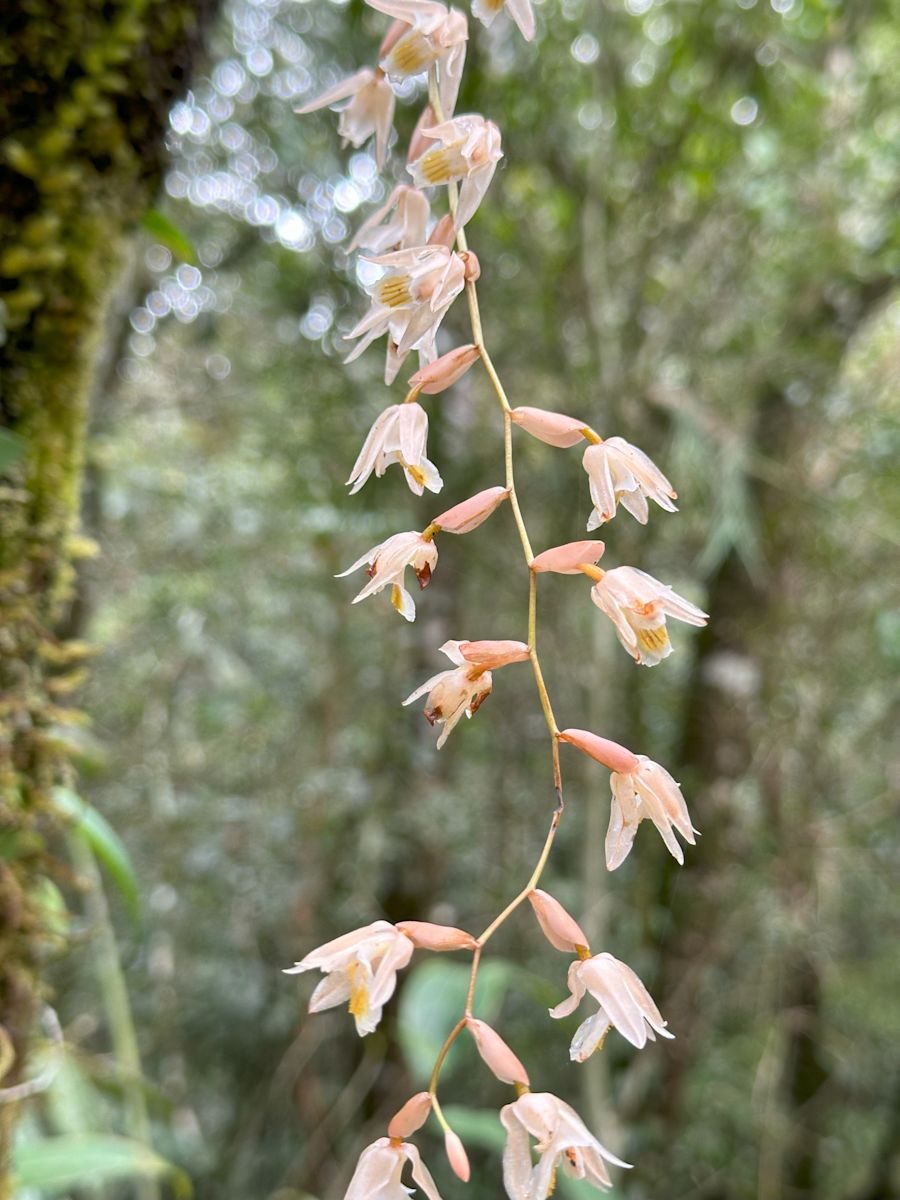
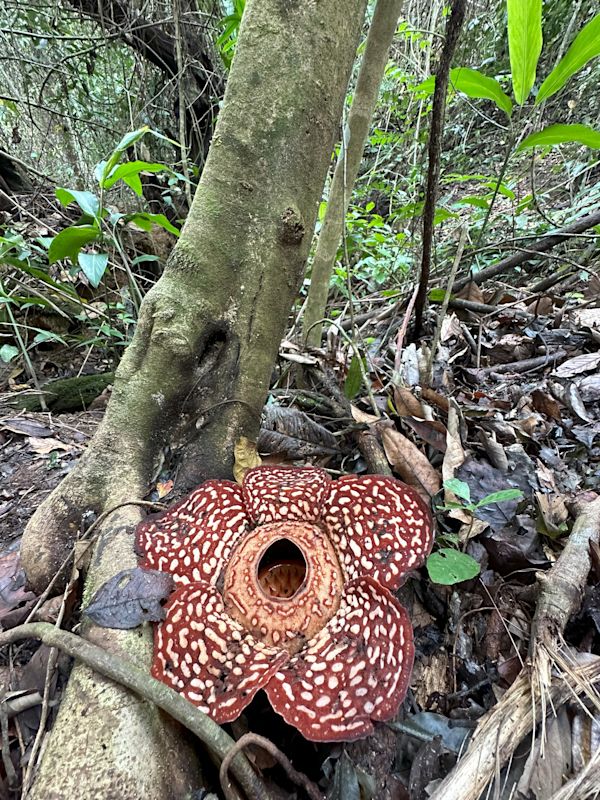
Not much of a flora buff here. Admiring giant trees, finding fruiting figs and staring at a flowering orchid are as far as we usually go. But things are different in Borneo with legendary flowers like the Rafflesia and the intricately patterned pitcher plants. We spent many days hiking to find these plants and in the case of Rafflesias, calling around and asking locals for flowering buds in the highlands. That’s the only way to go about it. These flowers appear on a five-day cycle and there is no saying when the next flowering can happen. It might mean dumping other plans when we got info and head towards the blooms. We managed to do it once and admire the beauty of the giant flower and understand its lifecycle thanks to the extremely knowledge and patient local lady who worked for the forestry service.

6. The Jewel of Mt Kinabalu
#mywildlife
Our last stop was Kinabalu Park, a beautiful highland wilderness located at the base of Mt Kinabalu, the highest peak in Borneo. This was the world of Whitehead endemics, the trogon, the spiderhunter and the broadbill. They were restricted to the higher altitudes of Crocker Range and the surrounding high peaks. We spent all day walking the trail, listening for calls, finding other birds, many interesting squirrels including the ‘Pokémon look-alike’ – the Whitehead’s pygmy squirrel, and admiring pitcher plants that we crossed paths with. It was after many hours of searching that we found the broadbill- A pair high up on the canopy. A few good looks and one click later the green birds disappeared back into the forest. We never even came close to hearing or finding the spiderhunter.
The story was different with the trogon. This one was heard off the Silau-Silau trail and waiting patiently in the area led to a memorable encounter with the jewel of Mt. Kinabalu. The male bird flew into view after what felt like ages but in that very moment, all the frustration and the pain of the hiking and searching melted away. The orange, red, checkered wings and slaty breast glowed in the darkness. The female also made an appearance on a nearby tree. We just stared at the creature in front of us. After seeing many species of trogons in India and the ones in Africa, we can confidently say that this one tops the lot. The bird flitted about for a while, hunting, with short breaks of glaring in our direction before flying back into the deep valley where they came from.

7. Creatures of the night
#seetheunseen
Almost less than half the life in Borneo is revealed if exploring is restricted to the days only. An evening gin, dinner and off to bed is not the way to explore this wilderness. Walking, driving at night, even in the smallest of jungle patches, can be extremely rewarding. Tarsier, loris, colugo, mouse deer, moon rats, civets, leopard cats, various species of bats, owls, frogmouths, pit vipers, blood pythons, tree snakes, gliding geckos and the unique horned frogs were some of the rewards of our incessant searching over long hours of the night. It was tiring and often fruitless but whenever we came across something it was truly worth all the effort.
SABAH WILDERNESS – CHALLENGES, UNCERTAINTIES, RAYS OF HOPE
Despite all the great wildlife and reserves, all is not well in Borneo. Like in the rest of Southeast Asia, the forests are shrinking here too. Since as recently as the 80s, the growing palm oil plantations and other development projects have brought over 70 percent of former primary forest land under the axe. This, coupled with unregulated hunting in some areas, sometimes selective hunting, has led to creatures disappearing from large parts of their former range. We met many individuals who spoke of the extent of forests they saw during their childhood, the girth of large trees, the mega flocks of hornbills and also of orangutans that are now long gone from their backyards.
Efforts to re-wild large areas are being undertaken. Constant monitoring and reintroduction of orangutans, sun bears, and other wildlife are all part of this major effort. The concept of selective scientific logging is introduced into some reserves as a sustainable way to harvest timber. We didn’t actually see the process in action but heard positives from people who worked in wildlife conservation. Another facet of conservation challenge in any island, including Borneo that we haven’t touched upon are the pressures on the coast and reefs owing to the vast and ever-growing fishing industry.

Conservation
of island fauna and flora
is always a complicated matter from the point of view of economics, population growth and other pressure factors and this is no different in Borneo. There is hope with the creation of reserves, scientific research, focused species conservation efforts and a very solid sustainable tourism and citizen science program.


We had an incredible adventure and much learning during our time in this beautiful island. There is so much more to see and we will go back. And as always, whatever we see, we’re just happy to walk in the shade of giant trees, under beautiful night skies and listen to the cry of the helmeted hornbill.

Sobre el autor:
Surya Ramachandran
Surya Ramachandran es un ingeniero de la ciudad de Chennai, al sur de la India, que más tarde persiguió su pasión por la naturaleza. Su viaje por la selva, que comenzó en los bosques de Satpura en Forsyths, empezó como becario para luego convertirse en naturalista a tiempo completo. Actualmente trabaja organizando tours de vida silvestre en destinos recónditos y en la creación de alojamientos y experiencias de vida silvestre en Ladakh, en el Transhimalaya, con el leopardo de las nieves y otra fauna menor presente allí como objetivo.

SOBRE EL AUTOR:
VEDANT THITE
Naturalista polifacético, Vedant ha vivido siempre cerca de la naturaleza y su pasión ha introducido a cientos de personas en la belleza de las zonas más silvestres de la India. Lleva 14 años en el ámbito de la conservación, la investigación y el turismo responsable y ha contribuido a múltiples estudios sobre la biodiversidad y el comportamiento de los animales. Tras 7 años como naturalista jefe en SUJAN JAWAI, Vedant ofrece ahora excursiones personalizadas como guía a empresas de viajes, grupos y particulares que quieran vivir una experiencia profunda, pero lujosa, de la rica flora y fauna de la India.
